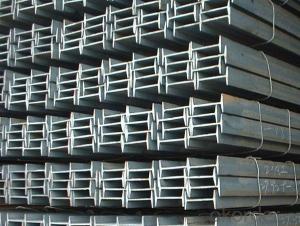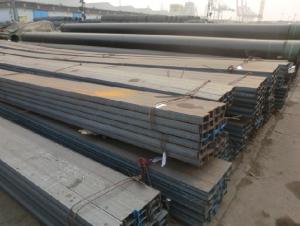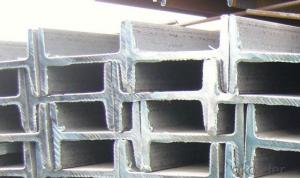Mild Steel Hot Rolled I Beam IPE In Construction Use
- Loading Port:
- China main port
- Payment Terms:
- TT or LC
- Min Order Qty:
- 25 m.t.
- Supply Capability:
- 10000 m.t./month
OKorder Service Pledge
OKorder Financial Service
You Might Also Like
Structure of Mild Steel Hot Rolled I Beam IPE In Construction Use Description:
Mild steel hot rolled I beam IPE in construction use is a beam with an I-shaped cross-section. The horizontal elements of the "I" are known as flanges, while the vertical element is termed the "web". Mild steel hot rolled I beam IPE in construction use is usually made of structural steel and is used in construction and civil engineering. The mild steel hot rolled I beam IPE in construction use resists shear forces, while the flanges resist most of the bending moment experienced by the beam. Mild steel hot rolled I beam IPE in construction use theory shows that the I-shaped section is a very efficient form for carrying both bending and shears loads in the plane of the web.
2. Main Features of Mild Steel Hot Rolled I Beam IPE In Construction Use:
• Grade: Q235
• Type: Mild carbon steel
• Deflection: The stiffness of the I-beam will be chosen to minimize deformation
• Vibration: The stiffness and mass are chosen to prevent unacceptable vibrations, particularly in settings sensitive to vibrations, such as offices and libraries.
• Local yield: Caused by concentrated loads, such as at the beam's point of support.
3. Mild Steel Hot Rolled I Beam IPE In Construction Use Images:
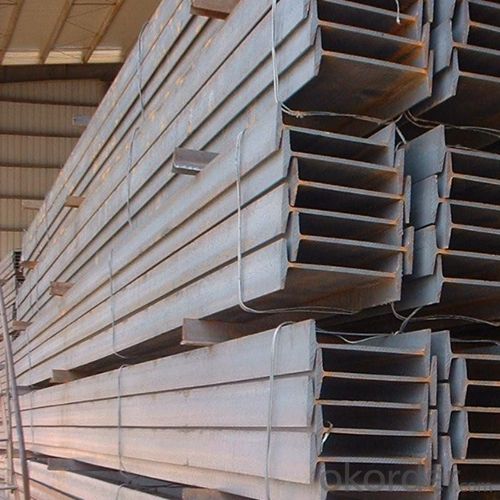

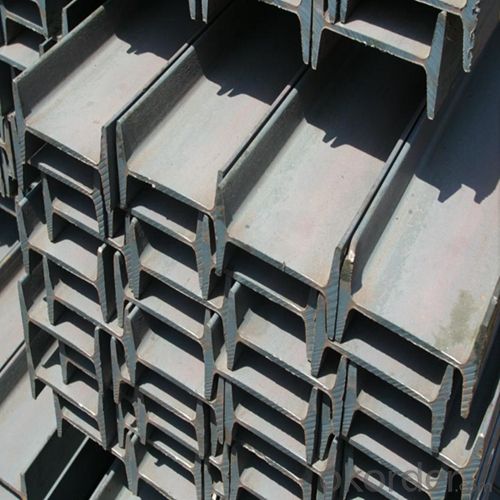
4. Mild Steel Hot Rolled I Beam IPE In Construction Use Specification:
Mechanical Properties | Grade | Steel diameter(mm) | |||
≤16 | 16~40 | 40~60 | 60~100 | ||
Yield Point Δs/MPa | Q195 | ≥195 | ≥185 | - | - |
Q235 | 235 | 225 | 215 | 205 | |
Tensile Strength | Q195 | 315~390 | |||
Q235 | 375~500 | ||||
Elongation δ5% | Q195 | ≥33 | ≥32 | - | - |
Q235 | 26 | 25 | 24 | 23 | |
5. FAQ
We have organized several common questions for our clients,may help you sincerely:
①Is this product same as W beam?
In the United States, the most commonly mentioned I-beam is the wide-flange (W) shape. These beams have flanges in which the planes are nearly parallel. Other I-beams include American Standard (designated S) shapes, in which flange surfaces are not parallel, and H-piles (designated HP), which are typically used as pile foundations. Wide-flange shapes are available in grade ASTM A992,[4] which has generally replaced the older ASTM grades A572 and A36.
②How to inspect the quality?
We have a professional inspection group which belongs to our company. We resolutely put an end to unqualified products flowing into the market. At the same time, we will provide necessary follow-up service assurance.
③Is there any advantage about this kind of product?
Steel I beam bar IPE has a reduced capacity in the transverse direction, and is also inefficient in carrying torsion, for which hollow structural sections are often preferred.
- Q:Can steel I-beams be painted or coated to match the desired aesthetics?
- Yes, steel I-beams can be painted or coated to match the desired aesthetics. Steel I-beams are commonly used in construction and industrial applications, where their strength and load-bearing capabilities are essential. However, their raw steel finish may not always be visually appealing or suitable for certain environments. To match the desired aesthetics, steel I-beams can be painted or coated using various methods. The surface of the beams needs to be properly prepared before painting or coating to ensure adhesion and durability. This typically involves removing any rust, dirt, or contaminants and applying a suitable primer. Once the surface is prepared, different types of paint or coating systems can be used. This can include industrial-grade paints, such as epoxy or polyurethane coatings, which provide excellent protection against corrosion and wear. These coatings can also be customized to achieve the desired color and finish. Additionally, powder coating is a popular method for aesthetic enhancement of steel I-beams. Powder coating involves applying a dry powder to the surface of the beams, which is then cured under heat to create a durable and attractive finish. Powder coating offers a wide range of color options and can provide a smooth, even, and uniform appearance. It is important to note that the choice of paint or coating system should consider the specific requirements of the application. Factors such as environmental conditions, exposure to chemicals or moisture, and the desired level of durability should be taken into account. Consulting with a professional painter or coating specialist can help ensure the best outcome in terms of aesthetics and performance.
- Q:Can steel I-beams be recycled at the end of their lifespan?
- At the conclusion of their lifespan, steel I-beams can indeed be recycled. Thanks to its durability and recyclability, steel stands as one of the most extensively recycled materials worldwide. Recycling facilities are responsible for collecting, sorting, and processing these I-beams once they have served their purpose. During the recycling process, the steel is melted down to eliminate any impurities and shape it into fresh products. Subsequently, the recycled steel can be utilized in the production of various items, such as new I-beams, reinforcing bars, automobiles, appliances, and cans. Opting to recycle steel I-beams not only conserves natural resources but also diminishes energy consumption and greenhouse gas emissions when compared to the production of new steel from raw materials.
- Q:How many kilograms per kilo is I-beam 16?
- The theoretical weight of No. 16 I-beam is 20.513 kg / m..
- Q:What are the common fabrication methods for steel I-beams?
- Steel I-beams can be fabricated using several common methods. The first method, hot rolling, is widely used. It involves heating a large steel billet and gradually shaping it into the desired I-beam profile by passing it through a series of rollers. This method ensures excellent structural integrity and dimensional accuracy. Another commonly used method is welding. By cutting and welding together steel plates or sections, the I-beam shape is created. This method allows for greater customization flexibility and can be used for both small-scale and large-scale production. Cold forming is a method where steel sheets or strips are bent and shaped into the I-beam shape through cold-rolling or using press brakes or roll forming machines. This method is often employed for smaller or lightweight I-beams. Extrusion, although less common, is used for specialized applications that require complex shapes or unique profiles. It involves forcing molten steel through a die to create the desired I-beam shape. In summary, these fabrication methods offer various options for manufacturing steel I-beams, enabling customization according to specific project requirements. Each method presents its own advantages and considerations, such as cost, production volume, and desired product properties.
- Q:Can steel I-beams be used in military or defense construction projects?
- Yes, steel I-beams can be used in military or defense construction projects. Steel I-beams are known for their strength, durability, and load-bearing capacity, making them suitable for various applications, including military infrastructure. They are commonly used in the construction of military buildings, hangars, warehouses, bridges, and other structures that require robust construction to withstand harsh conditions and potential threats.
- Q:What type of channel steel and I-beam should be used to build an attic floor? Thank you!
- With 20 I-beam, the distance can be controlled to 1.6 meters. With channel, then the spacing to control 1.2 meters more appropriate, the middle should use angle steel to do cross brace.
- Q:Can steel I-beams be used in residential remodeling or addition projects?
- Yes, steel I-beams can be used in residential remodeling or addition projects. Steel I-beams are commonly used as structural support beams due to their strength and durability. They can be used to replace load-bearing walls, create open-concept spaces, or support additional floors or additions. Steel I-beams provide excellent support for heavy loads and can span longer distances than traditional wood beams. Additionally, they have a smaller profile compared to wood beams, allowing for more flexibility in design and maximizing the usable space in a residential project. However, it is important to consult with a structural engineer or a professional contractor to ensure that the steel I-beams are properly sized and installed to meet the specific structural requirements of the project.
- Q:Can steel I-beams be used in sustainable or green building practices?
- Yes, steel I-beams can be used in sustainable or green building practices. Steel is a highly sustainable material as it is 100% recyclable and can be reused indefinitely without losing its properties. Additionally, steel I-beams are durable, energy-efficient, and can support the construction of large, open spaces, reducing the need for additional materials. Furthermore, steel manufacturing processes have become more environmentally friendly, with reduced energy consumption and emissions. Therefore, incorporating steel I-beams in building projects aligns with sustainable and green building practices.
- Q:Can steel I-beams be used for cryogenic applications?
- Indeed, cryogenic applications can make use of steel I-beams. The remarkable strength and durability of steel render it a fitting choice for a multitude of industrial uses, including those in cryogenic settings. Nonetheless, it is crucial to exercise caution when selecting the precise variant of steel to guarantee its aptitude in enduring the extreme temperatures and potential brittleness that can manifest under cryogenic circumstances. Moreover, it is imperative to consider adequate insulation and design factors in order to reduce heat transfer and avert thermal strain on the steel beams.
- Q:Can steel I-beams be used for skylights or atriums?
- Steel I-beams are not commonly used for skylights or atriums as they lack the necessary transparency or translucency needed to allow natural light to pass through. Instead, materials such as glass, acrylic, or polycarbonate are typically utilized in the construction of skylights and atriums. These materials are designed to both transmit light and maintain structural integrity, ensuring maximum natural light enters the space while also providing the required strength and durability.
1. Manufacturer Overview |
|
|---|---|
| Location | |
| Year Established | |
| Annual Output Value | |
| Main Markets | |
| Company Certifications | |
2. Manufacturer Certificates |
|
|---|---|
| a) Certification Name | |
| Range | |
| Reference | |
| Validity Period | |
3. Manufacturer Capability |
|
|---|---|
| a)Trade Capacity | |
| Nearest Port | |
| Export Percentage | |
| No.of Employees in Trade Department | |
| Language Spoken: | |
| b)Factory Information | |
| Factory Size: | |
| No. of Production Lines | |
| Contract Manufacturing | |
| Product Price Range | |
Send your message to us
Mild Steel Hot Rolled I Beam IPE In Construction Use
- Loading Port:
- China main port
- Payment Terms:
- TT or LC
- Min Order Qty:
- 25 m.t.
- Supply Capability:
- 10000 m.t./month
OKorder Service Pledge
OKorder Financial Service
Similar products
New products
Hot products
Related keywords

